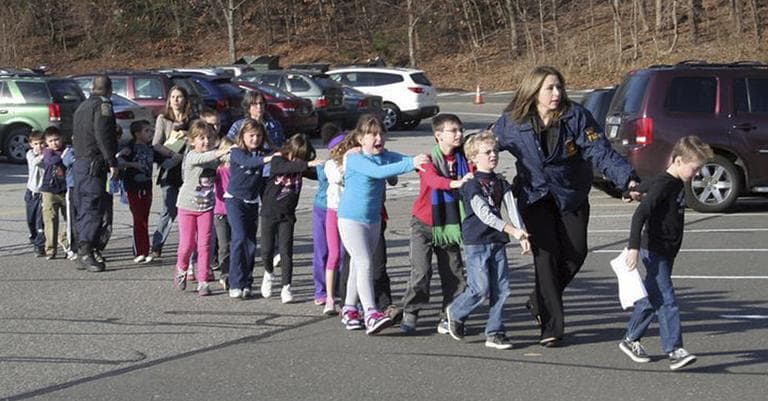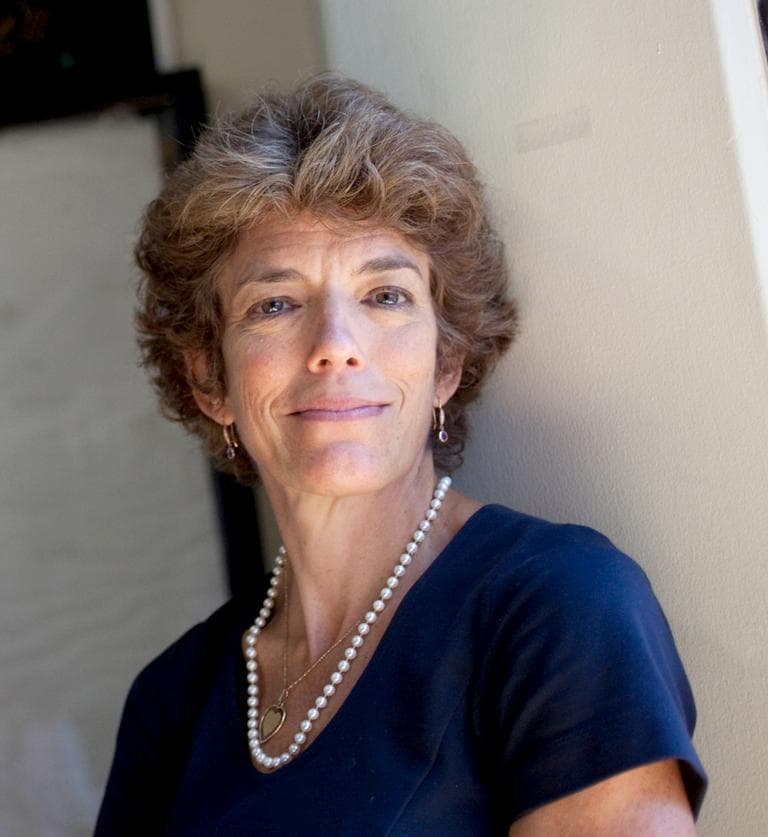Advertisement
Harvard Psychiatrist: Don't Draft Children To Fight School Shooters

A double public-engagement thank you to Dr. Nancy Rappaport, the director of school-based programs at Cambridge Health Alliance and an associate professor of psychiatry at Harvard Medical School. She shared valuable expert advice about post-shooting anxiety on the parenting blog of The New York Times this weekend, including the comforting thought that many children may simply take the bad news in stride. And below, she shares her warning that "ALICE," a strategy that drafts children into counter-attacks on school shooters, is not worth the risk.
By Dr. Nancy Rappaport
Guest contributor
In Friday’s news reports on the horrendous school shooting in Connecticut, the widely circulated photograph of children being led to safety by adults struck me. In it, students — understandably visibly upset — are evacuated in a line, hands on each other’s shoulders, and moving under the direction and supervision of trained adults.
Imagine, in all unlikeliness, the worst.
An armed gunman. Your children’s school. As a parent, your panic and anxiety are at unprecedented levels. Are your kids safe? Who’s responding to the situation? What’s happening?

This practice is known as ALICE — alert, lockdown, inform, counter, evacuate — and according to a recent article in the Boston Globe, more than 300 schools around the country have adopted its risky procedures, which include training children to intervene and participate in the event of a school shooting.
Conducting safety assessments is one of the critical components of my role as director of school-based programs for Cambridge Health Alliance. I advise administrative school officials and school districts on whether behaviorally challenged students are safety threats to others. As a psychiatrist and someone whose role is centered on the protection and best interests of students and schools, I am strongly against ALICE.
Last week’s indescribable tragedy notwithstanding, school shootings are rare, yet their horrors weigh on our consciousness. In reality, there’s a microscopic chance that a school is going to be targeted. For this rarity alone, the ALICE procedures are jeopardous in that they give students, parents, and schools a false sense of security.
Say students undergo a weeklong training course that teaches them to respond in an armed attack, and suppose that attack does occur — it’s ludicrous to believe that after a few exercises a student will capably respond during a time of extreme confusion and duress. Students aren’t being tested on their ALICE instruction; there’s a reason that police and SWAT teams are paid to respond to these threats — they undergo years of intense training.
The ALICE methodology puts kids and schools more at risk. I would argue that a kid’s provocations may make him more of a target. And what if he gets shot? This horrible incident then becomes a liability for schools that backed the training.
I appreciate how schools are thinking outside the box and want to respond appropriately in the event of emergencies. But we should focus on prevention, as well as reaction. After Columbine, the Colorado American Psychiatric Association implemented a successful program encouraging students not to be passive bystanders and to come forward if they have knowledge of a threat. It’s important to acknowledge our collective anxiety around school shootings and to address it by identifying individuals who are marginalized or have aggression and amplify our interventions, not just diagnostically but with school and parental support.
Teachers and school officials have crisis plans already in place, and it’s essential for schools to maintain up-to-date training and preparedness plans, such as evacuation routes. There are other effective measures to bolster security on school grounds, like adding a police detail, controlling access during school hours, and teaching kids not to open the door for strangers and to report suspicious activity to school officials. Disseminating vital school information, such as floor and preparedness plans, to third parties will aid first responders in the event of an emergency.
ALICE is a dangerous method plan that offers a false sense of confidence. This is familiar turf in our efforts to protect children. We installed the DARE program to prevent drug abuse, only to learn it doesn’t work. We held suicide prevention rallies in school auditoriums, realizing later they were a catalyst for already suicidal students. We banned long jackets, backpacks, and lockers, and now we want our kids to fight school shooters?
Let’s protect students and focus on community engagement and prevention. When it comes to ALICE, let’s keep her in Wonderland and out of our schools.
Nancy Rappaport, MD, is the director of school-based programs at Cambridge Health Alliance and an associate professor of psychiatry at Harvard Medical School.
This program aired on December 17, 2012. The audio for this program is not available.